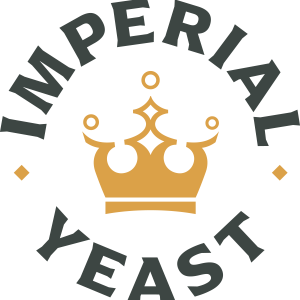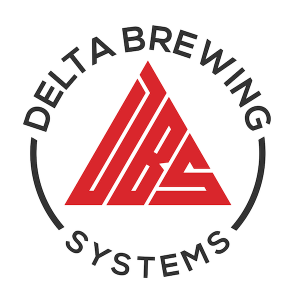Marshall’s twin brother, Marco, designed a delicious IPA recipe he called No Slack, a throwback to something from his days in the Army. Having never brewed another homebrewer’s recipe, I decided this would be a first… except I made numerous adaptations to fit the ingredients I had lying around. This A Lil’ Slack IPA ended up taking 2nd place in the IPA category at a BJCP competition with a score of 39.5!
A Lil’ Slack IPA
Recipe Details
| Batch Size | Boil Time | IBU | SRM | Est. OG | Est. FG | ABV |
|---|---|---|---|---|---|---|
| 5.5 gal | 60 min | 97.4 | 6.2 SRM | 1.063 | 1.012 | 6.69 % |
| Actuals | 1.063 | 1.012 | 6.69 % | |||
Fermentables
| Name | Amount | % |
|---|---|---|
| Pale 2-Row Malt | 10 lbs | 80 |
| Munich I | 1.75 lbs | 14 |
| Honey Malt | 12 oz | 6 |
Hops
| Name | Amount | Time | Use | Form | Alpha % |
|---|---|---|---|---|---|
| Simcoe | 17 g | 60 min | Boil | Pellet | 13 |
| Simcoe | 15 g | 30 min | Boil | Pellet | 13 |
| Mosaic | 15 g | 20 min | Boil | Pellet | 12.3 |
| Mosaic | 30 g | 30 min | Aroma | Pellet | 12.3 |
| Simcoe | 15 g | 30 min | Aroma | Pellet | 13 |
| Mosaic | 60 g | 8 days | Dry Hop | Pellet | 12.3 |
| CTZ | 15 g | 8 days | Dry Hop | Pellet | 16.5 |
| Nelson Sauvin | 30 g | 3 days | Dry Hop | Pellet | 12 |
| Simcoe | 15 g | 3 days | Dry Hop | Pellet | 13 |
Yeast
| Name | Lab | Attenuation | Temperature |
|---|---|---|---|
| House (A01) | Imperial Yeast | 75% | 62.1°F - 70°F |
Notes
| Water Profile: Ca 140 | Mg 1 | Na 10 | SO4 254 | Cl 159 |
Download
| Download this recipe's BeerXML file |









61 thoughts on “A Lil’ Slack IPA”
I’ve used Nelson Sauvin with Mosaic before. I think Simcoe would be a really interesting addition. I’d love to hear a bit about how it tasted!
Really freaking good!
Hey Marshall, great looking recipe. How did you calculate the 23 IBU’s for 60 min? Also, following a recent post of yours, if I were to only be doing FWH and hops at flameout, what are your recommendations for this recipe? Keep up the great work. I’ve only been homebrewing for about a year and much of what I’ve learned has been from your posts. You rock man!
I calculate using the Tinseth forumla in BeerSmith, makes it really easy– add hops until I reach a desired predicted IBU.
Good question, I’d do something like this:
~13g Simcoe @ FWH
60g Mosaic + 50g Simcoe @ flameout w/ 15 minute stand
Same dry hop stuff
What does 15 minute stand mean?
Throw hops in at flameout and let it sit (stand) for 15 minutes before chilling.
Calculate the IBU precisely it’s very difficult beacause we have humulinone effect during dry hopping. The only way to measure IBU, is HPLC with a final panel tasting because the bittrness dervived by humulinone it’s quit different.
Marshall, would you consider attempting an xBmt for flameout additions? One method utilizing your standard process and one doing final aroma hop addition at 120F?
Consider? It’s already on the list! I can’t promise when I’ll be able to get to it, as the list is freaking loooooong, but I will get to it, someday…
I currently have a PTE clone testing this. I shall let you know in a couple of weeks!
Please do!
Both of these beers came out fantastic with a very hop forward aroma. I had several friends try this and none perceived a difference in hop aroma or taste. I feel that the IBUs were too high for anyone to truly perceive a difference in hop flavor.
To us these 2 beers tasted the same.
“DO NOT LEAVE BEER IN CONTACT WITH DRY HOPS LONGER THAN 6 DAYS… UNLESS YOU LIKE GRASSY BEER”
So….can we see an exbeeriment on this sometime?
I’m asking because I’ve heard this come up time and again, but no one can agree on how long it takes (or if it does). Some folk dry hop in the keg, leaving the hops in until the keg kicks, and claim no ‘grassy’ flavors/aroma. Is it exposure to oxygen that’s the issue?
Great catch! I’m comfortable and only slightly embarassed admitting that that is 100% conjecture based on things I’ve read/heard. It will be edited… at least until something conclusive comes from an xBmt I have planned. Cheers!
And that’s why your blog is so awesome! I look forward to the results (especially because I’ve just started kegging!)
Do you typically rack after dry hopping and then cold crash, or just cold crash with the hops in there?
I always dry hop in primary, leave it for a day or so, cold crash for another day or so, then keg. I don’t even use a secondary… ever.
A little late to the party on this post, but this is one I’d be interested in seeing.
I think this is one that you’d find some serious disagreement between some of the best brewers around.
Vinnie’s Pliney recipe has a 12-14 day first dry hop with 3 oz. and with another 5 days with 1.5 oz total. https://www.homebrewersassociation.org/attachments/0000/6351/doubleIPA.pdf
But I’ve also heard other well respected pro’s such as John Kimmich refer to that vegetal flavor.
I’ve tried both, but never with the same hops, so it’s difficult to say. I think going forward I’m going to stick with 5 days or less for a bit, until i feel like I have the heart of my IPA receipt nailed down. Although, my favorite IPA to date had 12 days with Cascade, Centennial, and Falconer’s Flight.
I’ve always wondered if you should count the time cold crashing towards your total dry hop time?
I just did this recipe and the only change I made was subbing El Dorado for Mosaic and I have to say this is the best IPA I have made so far.
Great recipe.
Nice. Cheers!
I do BAIB brewing. To convert the recipe I need to know the volume of ambient wort, or said another way the volume of wort left in the kettle after chilling.
You indicate that 5.25 gallons are transferred to the fermenter.
Is all of the wort transferred into the kettle or is there some volume left behind, which would make the volume of ambient wort higher than 5.25 gallons.
Thanks
I probably leave .25-.5 gallons of wort in the kettle.
This recipe but with Maris Otter instead. Thoughts?
I’m sure it’ll be great, potentially indistinguishable from the original 🙂
Just poured my first pint of my attempt at this recipe. Possibly the best IPA I’ve brewed yet, the hops work together perfectly and the honey malt adds a perfect amount of sweetness without being cloying. Thanks for the recipe!
Awesome!!
Reporting back on my experience with this brew. First off, it went grain to glass in 15 days, and then lasted only two weeks. People really loved this stuff. I however modified it a bit. Instead of 2-row, I used Maris Otter, and I used The Yeast Bay’s Vermont Ale, which produced a fruit bomb to the dome! Amazing beer!
I’ve not heard of CTZ before, BeerSmith says it is columbus/tomahawk/zeus – i can only find Columbus in the UK… can you advise any alternatives? Is CTZ a 3rd of each of those hops but mixed together?
Thanks!
AFAIK, Columbus, Tomahawk, and Zeus are hops of the same variety grown by different companies. Since they are effectively similar and viewed as interchangeable (though they’re likely different), people refer to them as CTZ. Most of what I get is Columbus as well.
Great, thanks for the explanation Marshall
Andy,
Good resource here on hops and subs
http://beerlegends.com/columbus-hops
Thanks Malcolm!
Just brewed a mini mash version of this, very excited to taste it.
Bit of a newbie question but then I’m new to dry hopping – I’ve brewed this and my hops seem to be sitting on top of the beer do I need to pat them down or anything? Or will time and gravity sort it out?
You can give your fermentor of gentle agitation, that ought to get some of the hops into solution.
Do you add your dry hops directly to your carboy or add them to a bag and then drop them in?
Directly to primary with no bag.
Hello, which malt could replace malt honey?
It’s a very unique malt that doesn’t really have a good substitute, though some people think it is similar to Melanoidin Malt. I might just drop it altogether and replace it with more base malt.
I always use Melanoidin Malt and it’s a great beer! Brewing for third time soon
abbey malt can replace honey malt?
Ive never used it, but it sounds sorta similar.
Do you recall what he water profile was for this batch?
For IPA, I generally only pay attention to sulfate and chloride levels, aiming for a ratio of about 200 to 100, respectively, and I try to keep my pH around 5.3.
Brewed today. Substituted Imperial A04 Barbarian yeast.
Ooh, that’ll be great!
Going to give this one a try in the next few days. Variation inputs were great!. Thanks Marshal, and see you in Portland in June. I’m going because of your promotion of HomeBru Con.
Awesome, can’t wait to hear how the beer turns out and to meet you at Homebrew Con!
One more question regarding this recipe re “~23 IBU Simcoe” at the beginning of the list of Hops. What does that mean? Is that 23g at 60 minutes? Is that part of the recipe or where I can spike the bitterness?
Ahh. All it means is that you’ll use whatever amount of Simcoe hops at 60 minutes that’s required to achieve about 23 IBU based on that particular hop’s AA%. We use this method because the aim is IBU, not hop amount. If you use BeerSmith or some other recipe software, it’s easy, just add some hops, make sure to use the right AA%, then adjust the amount until your predicted IBU is around 23.
Super. Thank you! I really love what you are doing.
Hi, how long you recommend to leave in the dry-hoppings? Which temperature? Thanks! Great job!
From the receipt I understood the 1st would get into the fermenter on the 5th day and stay there until the 14th day, when I should do the cold crash and carbonate.. is this correct? Thanks again.
Saw your other question, figured I’d answer both here. So what you want to do is add the first dry hop addition about 4-5 days into fermentation (Mosaic & CTZ), add the second addition (Nelson & Simcoe) 2 days after that, then package or cold crash the beer 3 days later. So the beer is in contact with the dry hops for 5 days, maybe 6 or 7 if you cold crash in primary.
Great. Thanks!
I know this is old but do you remember getting a slight grassy/vegetal note from this beer? I just brewed this recipe without the honey malt and I used us-o5 and I’m getting a slight grassy bitterness. Any idea what it could be?
I brewed this fairly recently and didn’t get any grassy notes. My guess is it could be hop related– how old were the hops you used?
I don’t believe they were old. I ordered them from online and brewed with them within a week. They were kept in my freezer the whole time. This is the 3rd time I have gotten this grassy note in my beers, but not consecutively. I’m not sure what the cause of this is. The one beer that had a grassy taste wasn’t dry hopped either.
This is the third beer I have ever brewed and tried it for the first time tonight. Absolutely incredible. I can see this being a staple in my house. I actually brewed this as my second beer but bottled it. I bottled both my first and second brews and had issues with diacetyl and oxidation (beers tasted great prior to packaging). This time I decided to keg and what a difference it made. Won’t be going back to bottling. Thanks for the recipe!!
With all the talk lately about biotransformation during dry hopping I have been wondering about something… I definitely understand the benefit in terms of minimal O2 ingress to dry hop while there is still some fermentation happening to clean up after any O2 exposure. My question is, as someone who personally is not a fan of NEIPA, does dry hopping in primary but post-peak-fermentation allow for the qualities one would associate with classic West Coast IPA? Im sure hop varietal plays a role as well, but if someone is specifically *not* looking for the “juicy” thing but rather more of the “weed/dank/pine/resin” thing, can this quality still be accomplished when dry hopping while there’s still a little active fermentation happening? I don’t mind a little citrus note in the background, but I generally don’t care for it to be the dominant hop character in my IPA’s.